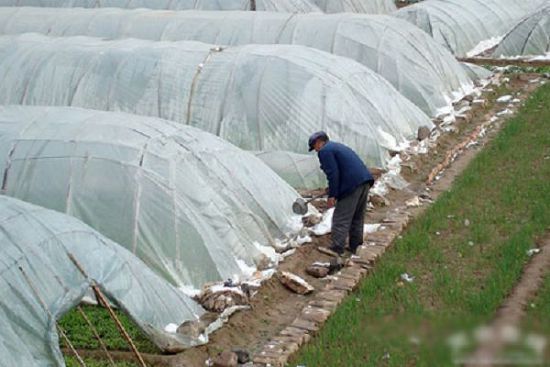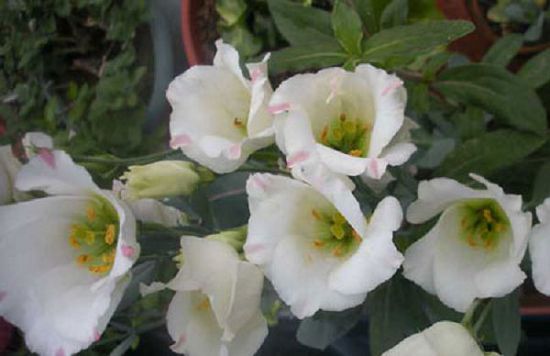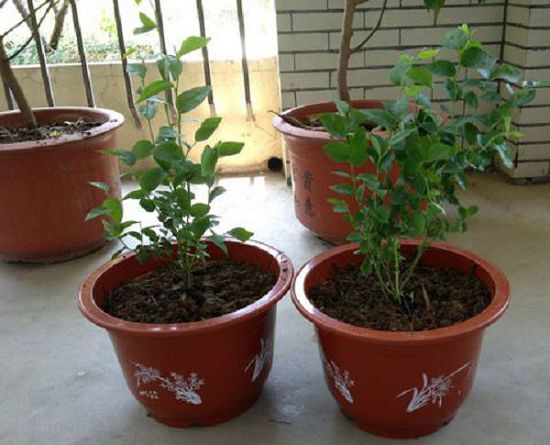Technical measures for snow prevention and frost resistance of flower seedlings in winter

First, it is necessary to do a good job in greenhouse reinforcement and snow removal. Remove the snow from the roof, increase the light transmission, effectively prevent the snow from crushing the greenhouse, and reduce the freezing low temperature after melting snow. When clearing the snow, you should gently pick and push to avoid piercing the greenhouse film, and carry the snow out of the nursery. The greenhouse with collapse and collapse deformation should be strengthened and repaired immediately, and if it cannot be repaired, the plants in the shed should be transferred in time, or covered with film, grass curtain or sunshade net to improve the heat preservation effect. The second is to do a good job of anti-freezing after snow. There will be frost damage weather after snow. the intima of the greenhouse should be added in all kinds of greenhouses to form internal and external two-layer film for heat preservation, and heating should be carried out in the greenhouse if possible.
After the snow, you should organize personnel to shake off the snow on the flowers and trees in time, hook the branches firmly when shaking the snow, shake it gently first, gradually aggravate it, and shake the snow on the leaves. After the snow melts, the roots should be strengthened to cultivate the soil and increase the ground temperature. Measures such as mulching, grass bunching and smoking can be taken in areas with favorable conditions to reduce frost damage. At the same time, we should also do a good job of clearing ditches and drainage around the nursery, reduce the soil moisture in the field, avoid snow water in the nursery, prevent frost injury and waterlogging injury at the same time, and frostbite the root system. For seedlings and ground cover plants, measures such as floating surface covering straw and sunshade net should be taken to prevent frost injury.
Recovery measures after freezing injury. After freezing injury, the cultivation management should be strengthened to restore the tree potential.
The main results are as follows: 1. Timely drainage after freezing can alleviate the effect of freezing injury and reduce the loss. After sprouting, more attention should be paid to the management of soil moisture. Excessive waterlogging and drought are not conducive to the recovery of plant growth.
2. Implement soil cultivation and inter-row mulching. After snowmelt, new soil can be cultivated around the plant, and the seedbed can be covered with firewood, straw, turf, leaves, sawn ash, barnyard manure, rice and wheat shell Lemma and rice straw before the soil is frozen, so as to increase the heat preservation effect of the soil.
3. The crown should be treated reasonably according to the degree of frost injury. The shoots are still good after freezing, but the leaves do not wither, so they should be removed in time. The pruning of frozen dry branches should be carried out after sprouting, leaving the healthy part and cutting off the dead part, which is not easy to cut early, and the early cutting wound is easy to be infected with diseases and continue to dry up, which is extremely disadvantageous.
4. For the lightly frozen plants with curly leaves, yellow leaves and weak growth, 0.5% urea can be used for 2 or 3 times of extra-root topdressing. After thawing in early spring, spring fertilizer should be applied early to restore its growth potential. Plants with severe freezing injury should be fertilized thinly and more, and special attention should be paid to controlling the period of fertilization, in order to promote spring and summer shoots and control autumn shoots. In addition, flowers and trees grow weakly after being frozen, and they are often easy to cause diseases and insect pests, so they must be checked frequently to do a good job in pest prevention.
- Prev

Culture methods and pest control knowledge of flower plant Platycodon grandiflorum
Culture methods and pest control knowledge of flower plant Platycodon grandiflorum
- Next

Topdressing methods and matters needing attention of potted flowers and plants
Topdressing methods and matters needing attention of potted flowers and plants
Related
- What if the leaves of potted flowers turn yellow?
- Florescence Control of several Flowers
- Anti-freezing technology and post-freezing nursing technology of flowers
- What is the classification of flowers? What are the common methods of flower classification?
- Prevention and control of alkali and acid damage of flowers in courtyard
- Technology of Anti-freezing and restoring growth of Flower seedlings in greenhouse and greenhouse
- How does flower fertilization not hurt the root? Fertilization technology of flowers
- Key points of disinfection in flower greenhouse
- Several pesticides that are banned or used cautiously in flowers
- How to fertilize the flowers that watch the leaves?

